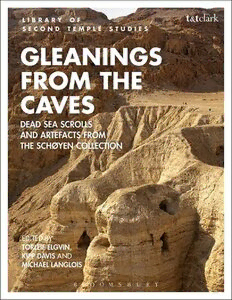
Gleanings from the Caves: Dead Sea Scrolls and Artefacts from The Schøyen Collection PDF
512 Pages·2016·31.426 MB·English
Most books are stored in the elastic cloud where traffic is expensive. For this reason, we have a limit on daily download.
Preview Gleanings from the Caves: Dead Sea Scrolls and Artefacts from The Schøyen Collection
Description:
This special edition large format LSTS volume publishes ten biblical and five non-biblical fragments from the Judean Desert, more than half of them for the first time. The fragments will be published with 42 adjoining photographs. The publication of seven new fragments from the Judean Desert will supplement the Discoveries in the Judaean Desert series and update scholars on the full textual situation. Two of the new biblical fragments preserve substantial textual variants. The new Aramaic fragment demonstrates interesting linguistic forms. The book will include a 10 page essay by Martin Schoyen about how he tracked down and acquired Judean Desert fragments and artifacts from 1994, and another (15-20 pages) by Hanan Eshel on the present state of affairs with regard to Judean Desert fragments in private hands. The manifold material included in this volume will give the reader a comprehensive picture of texts and artifacts from Qumran seen together. The fragments are as follows: Biblical fragments - First edition - 4QLeviticusi , 4QSamueld , 4QDeuteronomyt , and 4QTwelwe prophetsh ; New (additional) fragments of 4QPsalmsq and 4QExodusc ; Improved edition of XJudges frg 3 , 4QJoshuac , 1QDanielb , and 4QJoshuac ; Apochryphal fragments - 4QTobita ar (reedition) and 1QapocrGenesis (reedition); and, Other fragments - 1QSb ( Rule of Blessings , reedition), 11QTemplea , and 4QAramaic frg . The book will also include images and discussion of the following items, probably deriving from the Qumran site: Incense altar, inkwell, scroll jar, palm leaf stylus, sandal sole, and scroll wrapping. These items will be presented in the context of the Qumran site and relevant contemporary material parallels from the Levant. The Library of Second Temple Studies is a premier book series that offers cutting-edge work for a readership of scholars, teachers, postgraduate students and advanced undergraduates in the field of Second Temple studies. All the many and diverse aspects of Second Temple study are represented and promoted, including innovative work from historical perspectives, studies using social-scientific and literary theory, and developing theological, cultural and contextual approaches.
See more
The list of books you might like
Most books are stored in the elastic cloud where traffic is expensive. For this reason, we have a limit on daily download.
